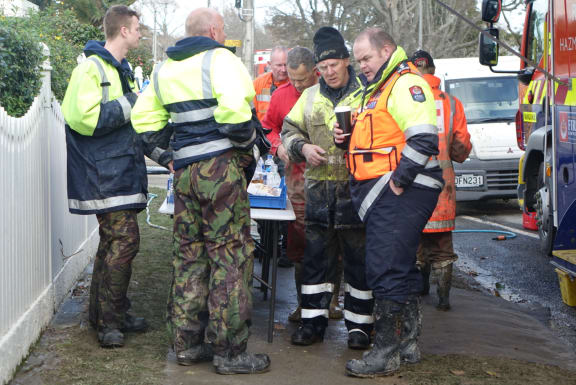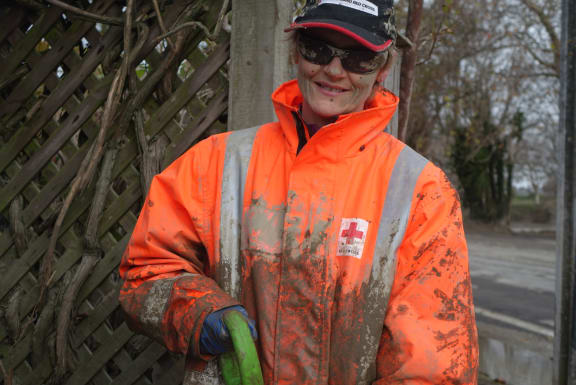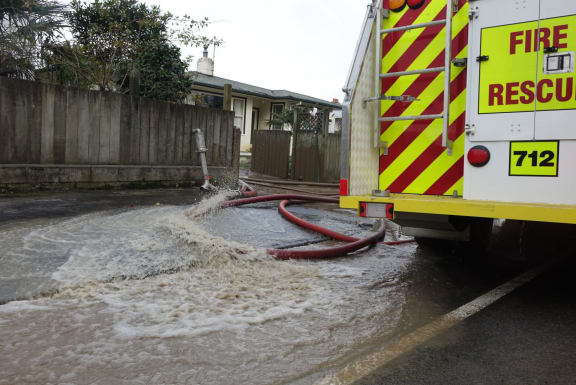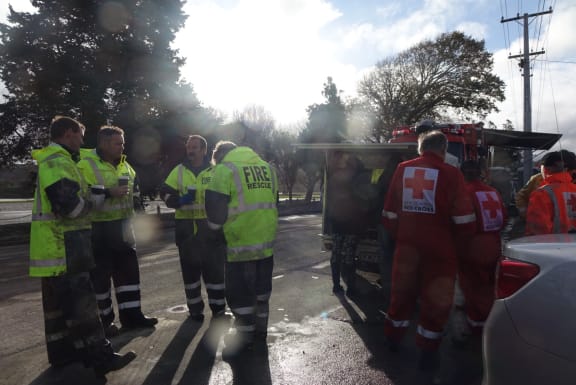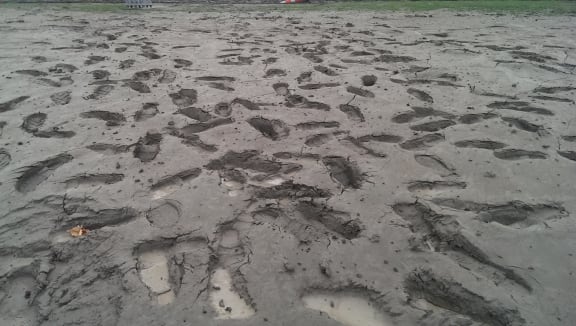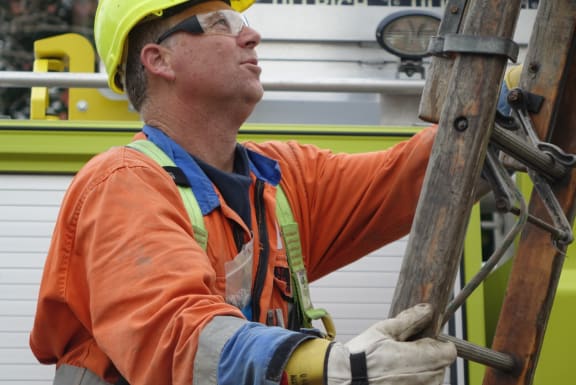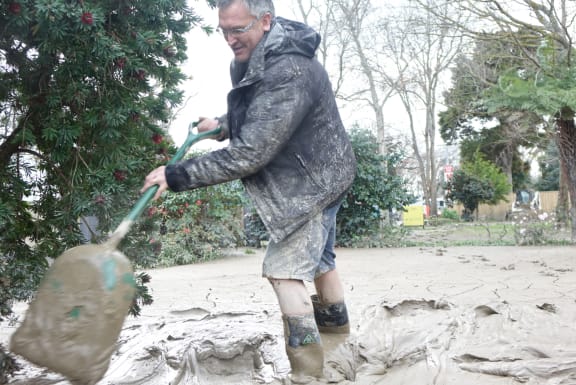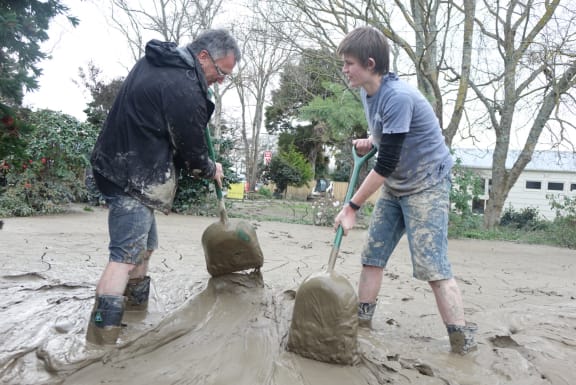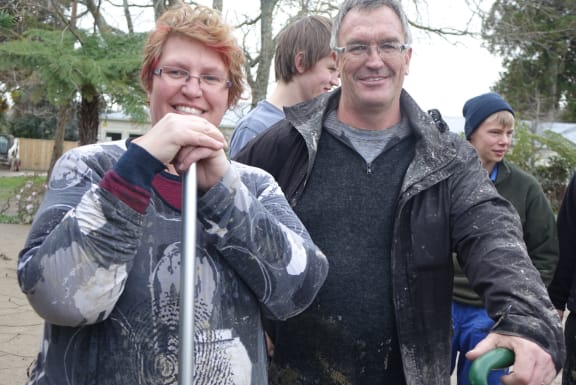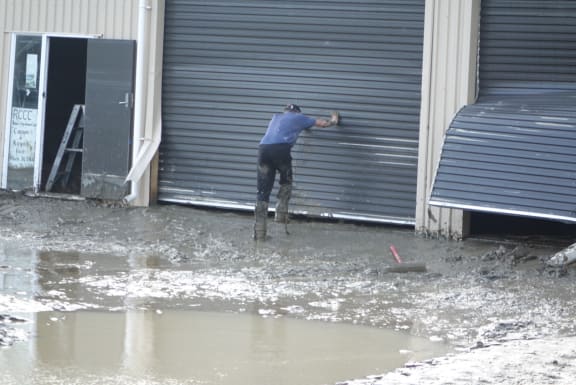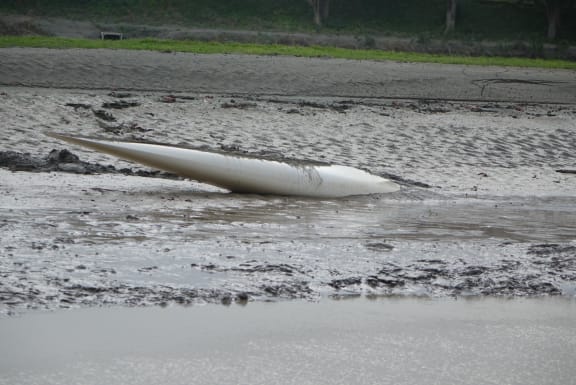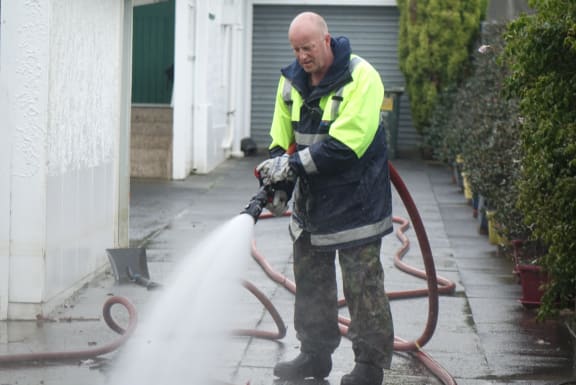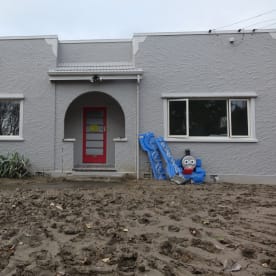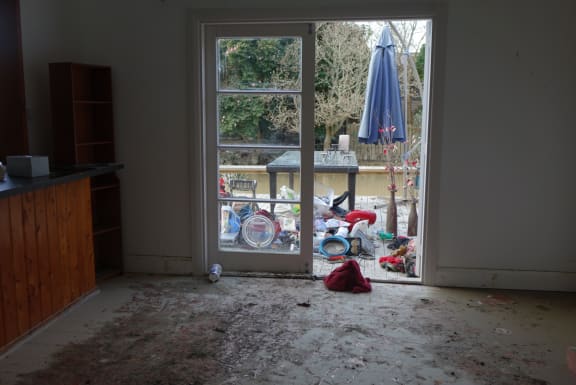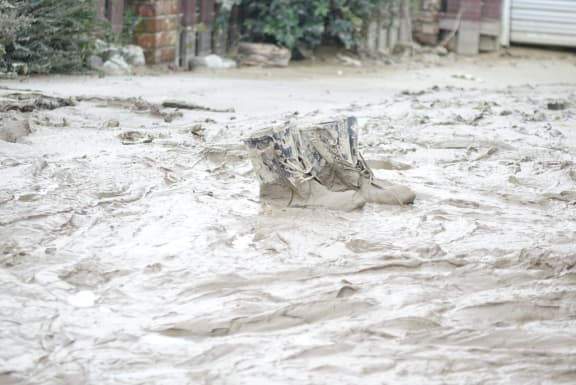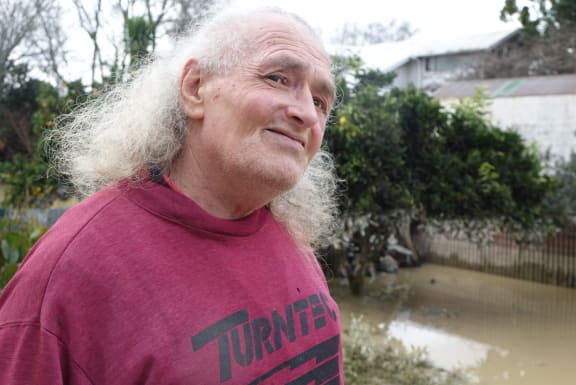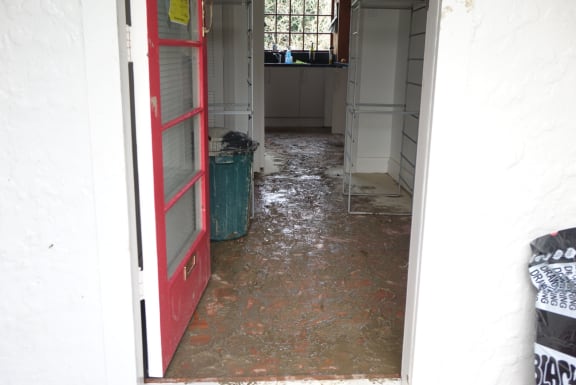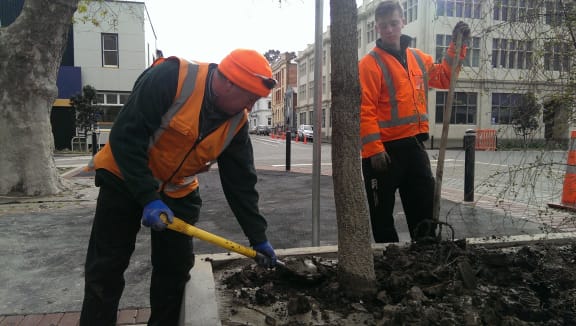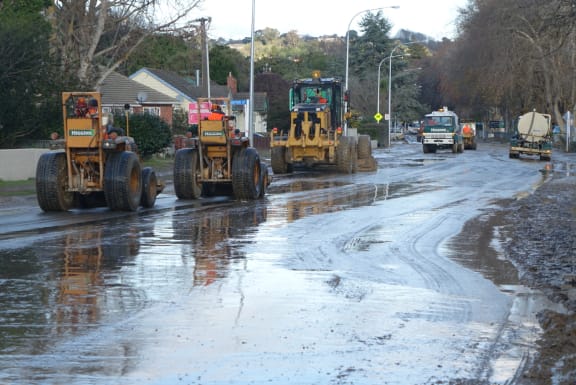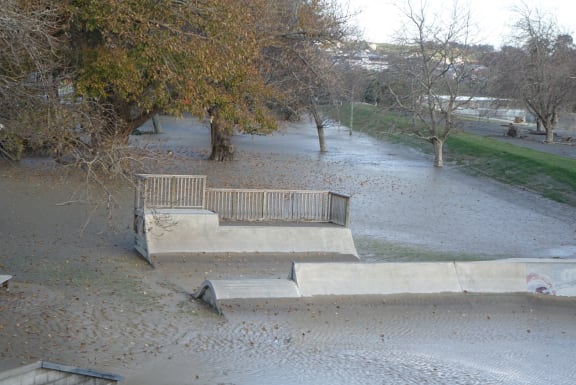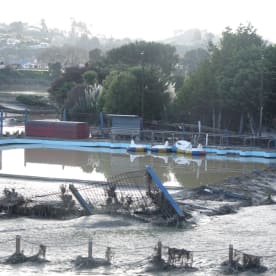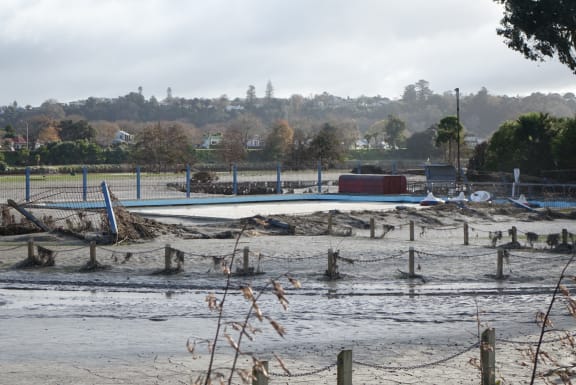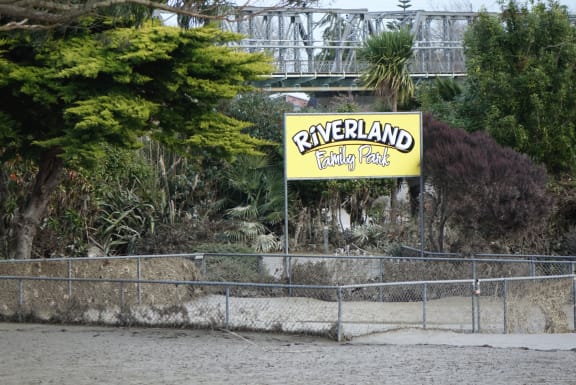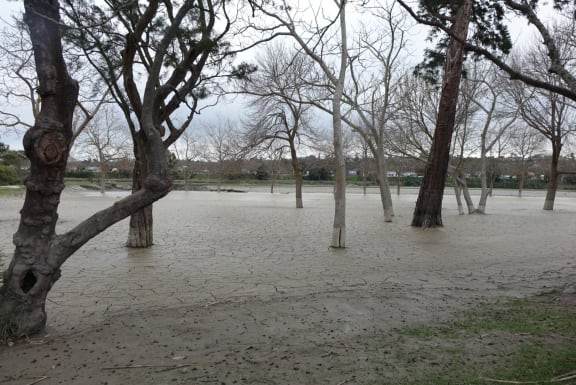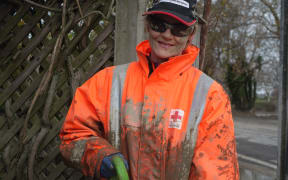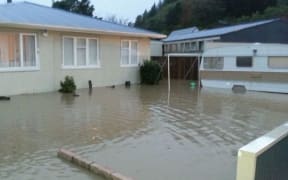About 120 properties on the street worst hit by the flooding in Whanganui have been inspected, and Civil Defence says most are still insanitary and unsafe.
Building assessors have returned to about 120 properties on Anzac Parade to judge how safe they are for people to move back, but yellow stickers have been placed on the majority of them, which means work needs to be done before people can move back in.
Civil Defence said about a dozen properties have been condemned.
Anzac Parade, running along the eastern bank of the Whanganui River, was the residential road worst-hit by last weekend's flood.
Civil Defence controller Stuart Hylton said the majority of properties had been given yellow stickers, which meant work needed to be done before people could return.
"For most of those residents it'll be a bit of time yet before their builders and insurers can get back into their homes."
Mr Hylton said others were now able to check the damage to their homes.
"It's beautifully fine in Whanganui so that's assisting, they're allowed back in their homes, they can see the damage, they can comprehend what they face, the task at hand and they can get on and do things - others are facing a bit more hardship."
Mr Hylton said there were a few seriously damaged houses that had been deemed unsafe and no one was permitted to enter.
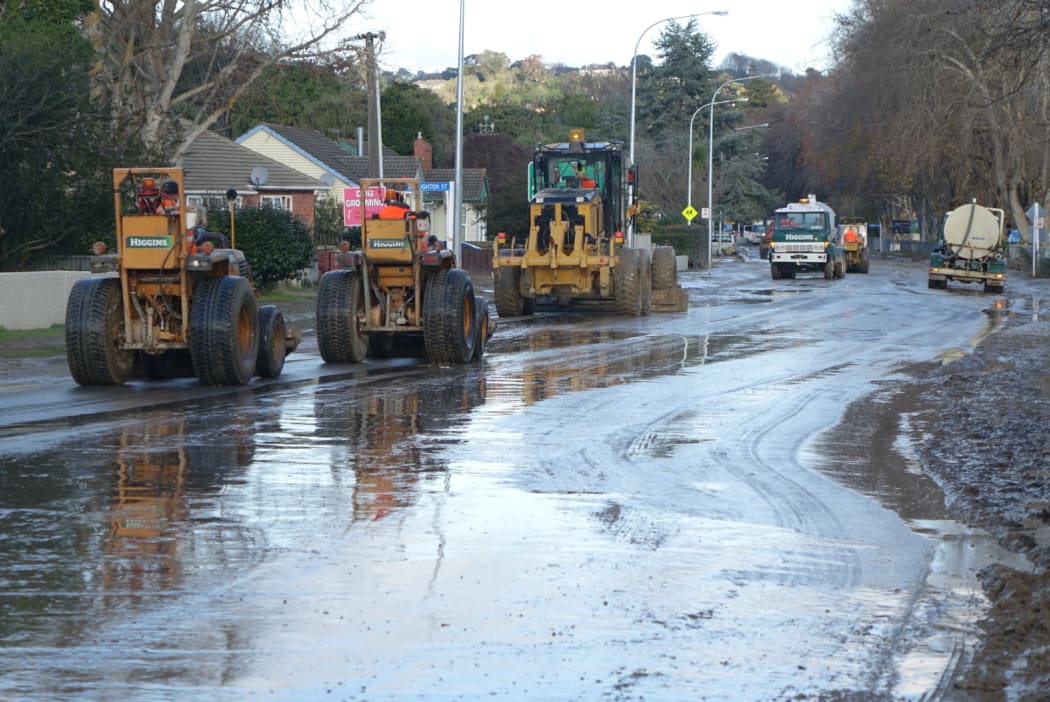
The clean up on Anzac Parade. Photo: RNZ / Robin Martin
A distraught Angie Cawley was one of many who returned to Anzac Parade this morning and she said she never expected the damage to be so bad.
"It was very muddy and dark and wet and stinky, so we salvaged whatever we could which was very little, every precious photo, jewellery, all sorts of things are just lost in the mud all over the floor, it's absolute devastation and very surreal."
Ms Cawley said she had seen similar scenes on television and in movies, but never imagined it could happen to her.
Meanwhile, a linesman working in Anzac Parade in Whanganui said it was unsafe to reconnect power to many of the homes.
Andrew Henare said he had been busy working on the street, reconnecting power where it was safe to do so.
But out of 40 houses he had tested, he said only about six could have their power back on.
"Everyone is obviously emotional about it all and they want to come and move in, but safety's the priority obviously and so if it's not safe it's not getting put on."
Commitment to flood-hit areas welcomed
The Mayor of Whanganui is welcoming the Government's commitment to help the region after last weekend's severe flooding.
Residents in the lower North Island are recovering from last weekend's severe floods, which destroyed houses, displaced hundreds of people and caused numerous slips.
The Manawatu-Whanganui regional council estimates the cost of the floods to be about $120 million, with the worst-hit regions being Taranaki, Whanganui, Rangitikei and Westland.
The figure includes social, building and economic costs to businesses, but excludes the rural sector.
Prime Minister John Key was in Whanganui yesterday, and said the impact was probably too great for councils to withstand - and the Government will help.
"Historically, the government has paid about 60 percent of those costs and then insurance covers some more of it.
"But that will obviously leave a shortfall so I image government will need to go back and assess what our next steps will be."
Mr Key said he would be talking to Finance Minister Bill English and other cabinet colleagues about it on Monday.
"We are very conscious of the fact that a lot of damage has been done. For some of our farmers here there is going to be quite a slow and long recovery process."
Whanganui Mayor Annette Main said his comments were reassuring.
"Obviously they can't commit on a dollar basis while we're still having discussions, we're still trying to get the size of this really clear.
"But I'm really impressed with the willingness to come and talk to us and the willingness ask the questions and find out what we need."
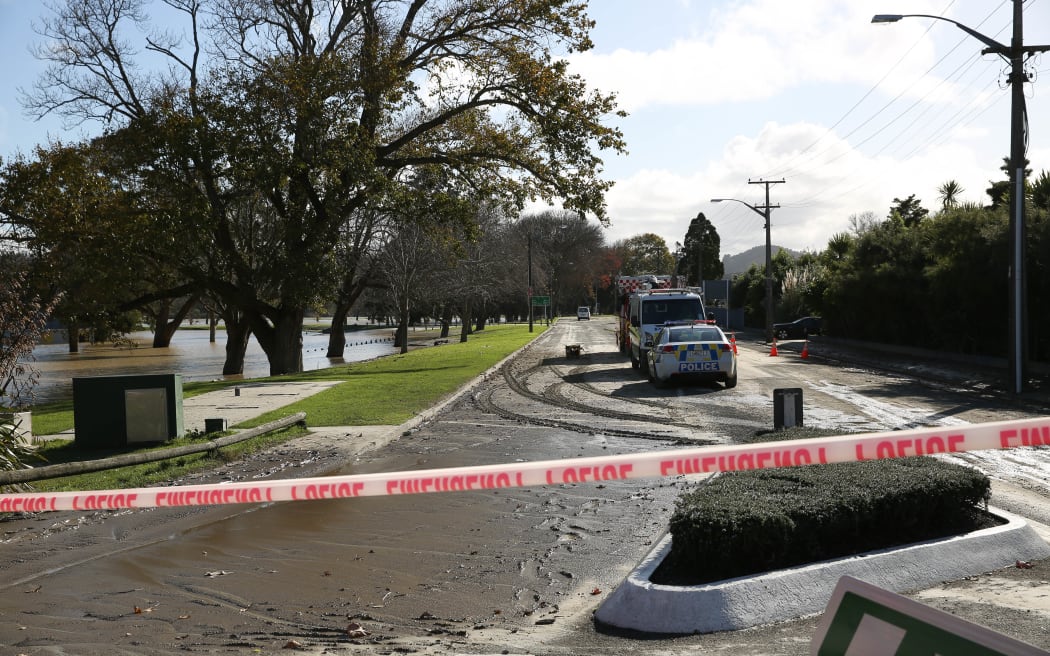
Anzac Parade, Whanganui, 22 June. Photo: RNZ / Tom Furley
She said infrastructure damage in Whanganui would cost about $40 million alone.
Horizons Region Council's recovery manager Ged Shirley said an assessment of the rural sector will take some time, as much of the land was still underwater or in isolated parts of the region.
"We're co-ordinating data collection for the Ministry of Primary Industries so indicative modelling can be undertaken based on rainfall intensities, inundation and models of slip-prone land," he said.
"This modelling will consider impacts on sheep and beef, cropping, forestry and dairy and will be used to calculate the economic cost on the Primary Production Industry."
Mr Shirley said it's estimated about 350,000 to 400,000 hectares of land was subject to high intensity rainfall, and about 60,000 hectares was subject to various levels of inundation.
The Government has so far contributed $310,000 to Manawatu-Whanganui, Taranaki and Westland Disaster Relief Funds.
Weather warning downgraded
Meanwhile, a warning to residents in the flood-hit city due to rain forecast for this weekend, has been downgraded.
MetService had forecasted up to 10mm of rain in the city, and up to 20mm on the headwaters of the Whanganui River over the weekend, but they now say the city will stay relatively dry over the next couple of days.
Forecaster, Karl Loots said only a few showers were expected over the next days.
Cordons lifted
Some emergency cordons around flood-affected parts of Whanganui have began to come down.
The emergency cordon on Taupo Quay and part of Anzac Parade in East Whanganui was lifted yesterday, with the remainder are re-opening today.
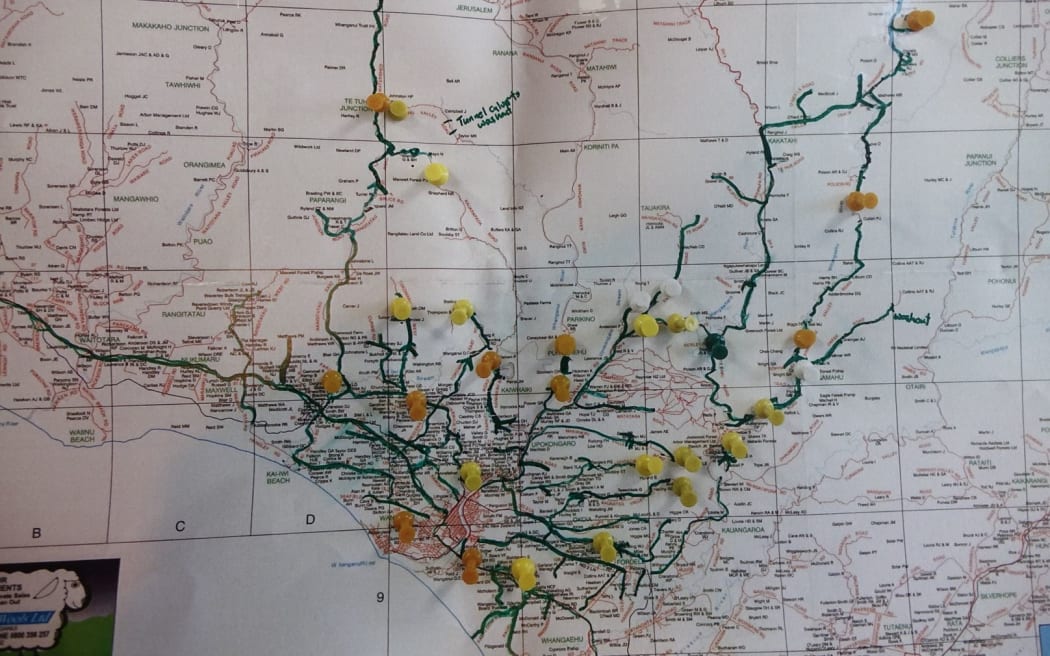
Road works in the Whanganui region. Photo: RNZ / Robin Martin
The Manawatu Gorge Road was re-opened yesterday and the other main link between Palmerston North and the Tararua District, Pahiatua Track, was reopened this morning.
Palmerston North City Council's acting roading manager Andrew Higgs said crews had to clear between 30,000 and 40,000 cubic metres of soil and rock to reopen the road.
He said both lanes were open, but motorists should drive carefully and 30 kilometre speed limits are in place in some sections.
The road may also be reduced to one lane for periods of time over the next two weeks, so that workers can finish the clean up, he said.
State of emergency to end in Taranaki
Civil Defence is ending the state of emergency declared a week ago in Taranaki after the big rainstorm caused widespread flooding and forced the evacuation of dozens of homes.
Civil Defence is still providing supplies and urgent support to some isolated rural households, but said the focus should now turn to the recovery effort.
Its emergency management controller, David Lean, said it would take a long time for people's lives to return to normal.
The state of emergency ended at 9pm tonight. However, a state of emergency is likely to remain in force in Whanganui for at least another week.
